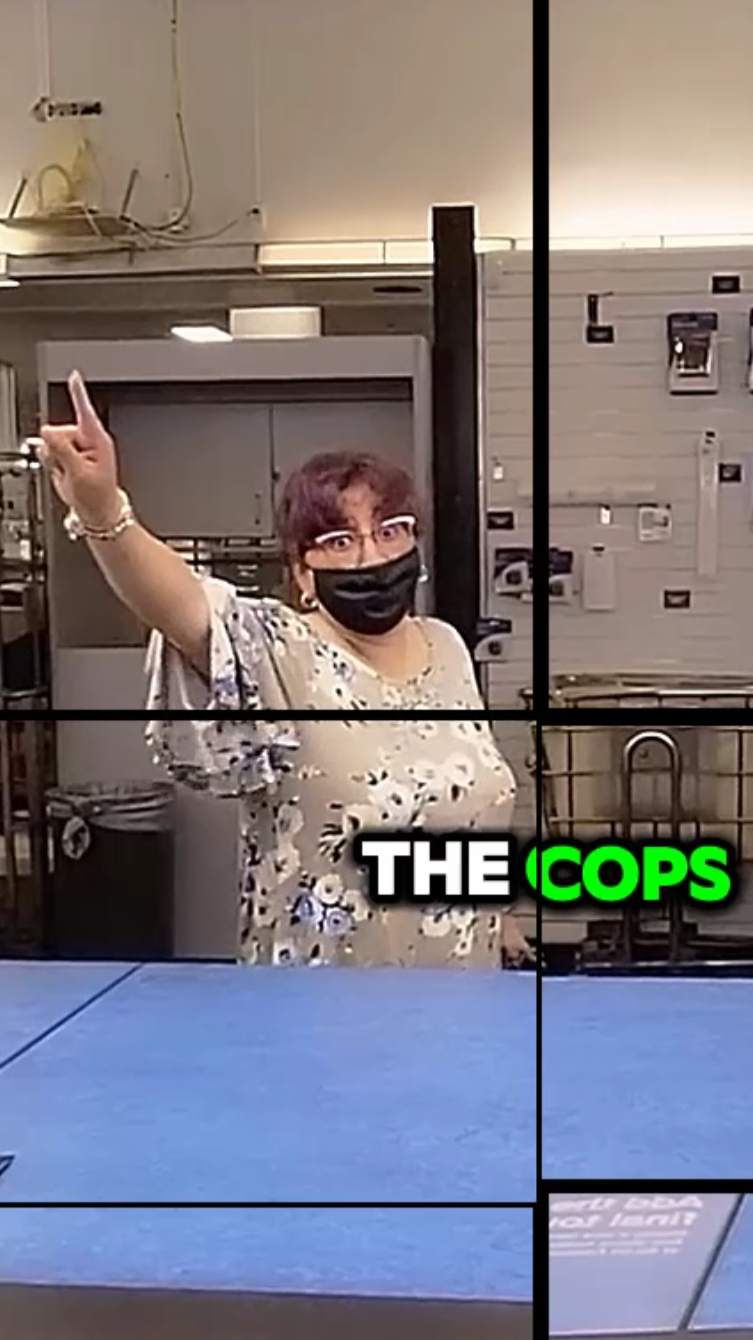In a tense confrontation that’s quickly making waves online, a man was arrested after refusing to stop recording inside a public building, igniting a heated debate about privacy rights, public spaces, and police authority.
It all started when the man, whose identity is not yet confirmed, entered a local government building, presumably to conduct business. Armed with his phone, he began recording the interior of the facility. But when a woman working in the building noticed, she immediately confronted him, demanding he cease filming. “Either you stop recording, or I’ll call the police,” she said sternly, according to footage captured by the man himself.
The man, seemingly unfazed, continued filming, asserting that he had the right to do so in a public space. This refusal to comply set the stage for an escalating confrontation, as the woman promptly called the authorities to handle the situation.
The Police Arrive: A Clash of Perspectives
Within minutes, two officers arrived on the scene. According to the footage, the officers immediately told the man that recording inside the public building was not allowed. They claimed that the man’s actions violated building policies and that he was trespassing.
However, the man, standing his ground, responded defiantly: “This is a public space. How can I be trespassing?”
A brief argument ensued, with the officers insisting that recording in the building was against the rules, but the man countered that as a taxpayer-funded public facility, he had every right to document what was happening inside. The police, however, stood firm in their assertion that he was in violation of the building’s policies and that he was trespassing for refusing to stop recording.
“I’m not trespassing,” the man shot back, “You can’t stop me from recording in a public space.”
Despite his insistence, the officers continued to press for compliance. At this point, the man requested to speak with a supervisor, likely hoping to escalate the matter in search of a different answer. But this only seemed to intensify the situation.
The Arrest: ‘We’re Going Outside’
The officer, appearing increasingly frustrated, responded by telling the man, “If you don’t stop recording and come outside with us, we’ll have to take further action.”
The man refused to leave the building. “I’m not going anywhere unless you tell me I’ve broken a law,” he responded.
In what seemed like an attempt to defuse the situation, the officer suggested they step outside to avoid disrupting other people in the building. But the man refused, standing his ground firmly, still recording. Moments later, the situation took a more serious turn.
In what some viewers are calling a “show of force,” the officer moved to cuff the man’s hands. A struggle ensued, though the man appeared to comply with the arrest. The video cuts off just as the officer leads the man toward the exit, with the crowd murmuring in the background, some seemingly in shock over the unfolding events.
The Viral Aftermath: Legal and Public Reactions
The video has since gone viral, sparking heated debate online over the legitimacy of the arrest and the limits of public rights. On social media, opinions are sharply divided. Some argue that the man was well within his rights to record in a public building, particularly since it’s taxpayer-funded, while others believe the officers acted within their authority in enforcing building policies that prohibited recording.
“I don’t understand how they can arrest him for recording in a place anyone can enter. It’s a public building,” one user commented. “This feels like an overreach by the police.”
On the other hand, others have expressed support for the officers, suggesting that while public spaces may allow filming, there are often specific rules about where and when it’s permitted. “Public spaces aren’t free-for-alls. People need to understand there are guidelines,” another user posted.
The Law: What You Need to Know
Legal experts have weighed in on the situation, noting that public buildings are often subject to specific rules about recording. While citizens typically have the right to record in public spaces, including government buildings, this right is sometimes limited by policies meant to protect privacy, security, or the orderly conduct of business.
In this case, the arrest hinges on the interpretation of “trespassing.” While some argue that public spaces cannot prohibit recording, others point to internal building policies that might restrict certain actions inside. For instance, filming government employees at work or capturing sensitive information could fall under the umbrella of prohibited activities, even in public spaces.
A Growing Trend: The Public’s Right to Record vs. Government Regulation
This incident is just the latest in a growing trend of confrontations involving citizens recording in public spaces. Over the past few years, there has been an increasing pushback against public building policies restricting filming, with many asserting that transparency and accountability should be the goal.
But the question remains: where do we draw the line between a citizen’s right to record in public and the authority of institutions to regulate their spaces?
Conclusion: What Happens Next?
For now, the man has been released, though charges remain unclear, and a follow-up investigation may be underway. What remains certain is that this incident has reignited conversations about the balance between civil liberties and public regulations.
Is recording in public buildings a fundamental right, or should authorities have the discretion to impose limitations? And when does a peaceful recording session turn into trespassing?
As the viral video continues to make its rounds across social media, it’s clear this story is far from over, with many eagerly awaiting the official explanation from both the police department and legal experts.
